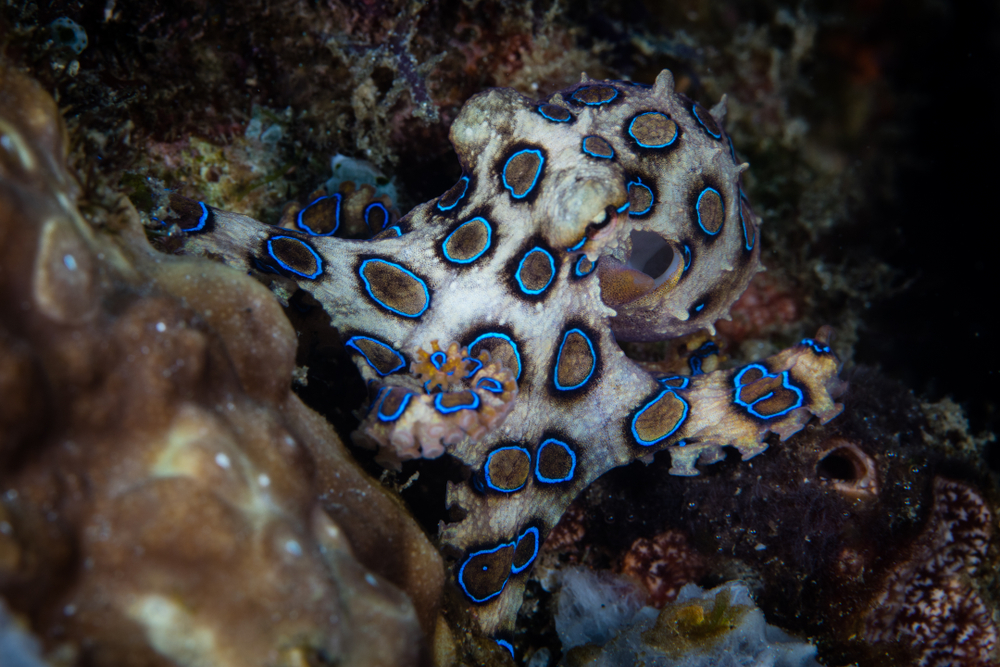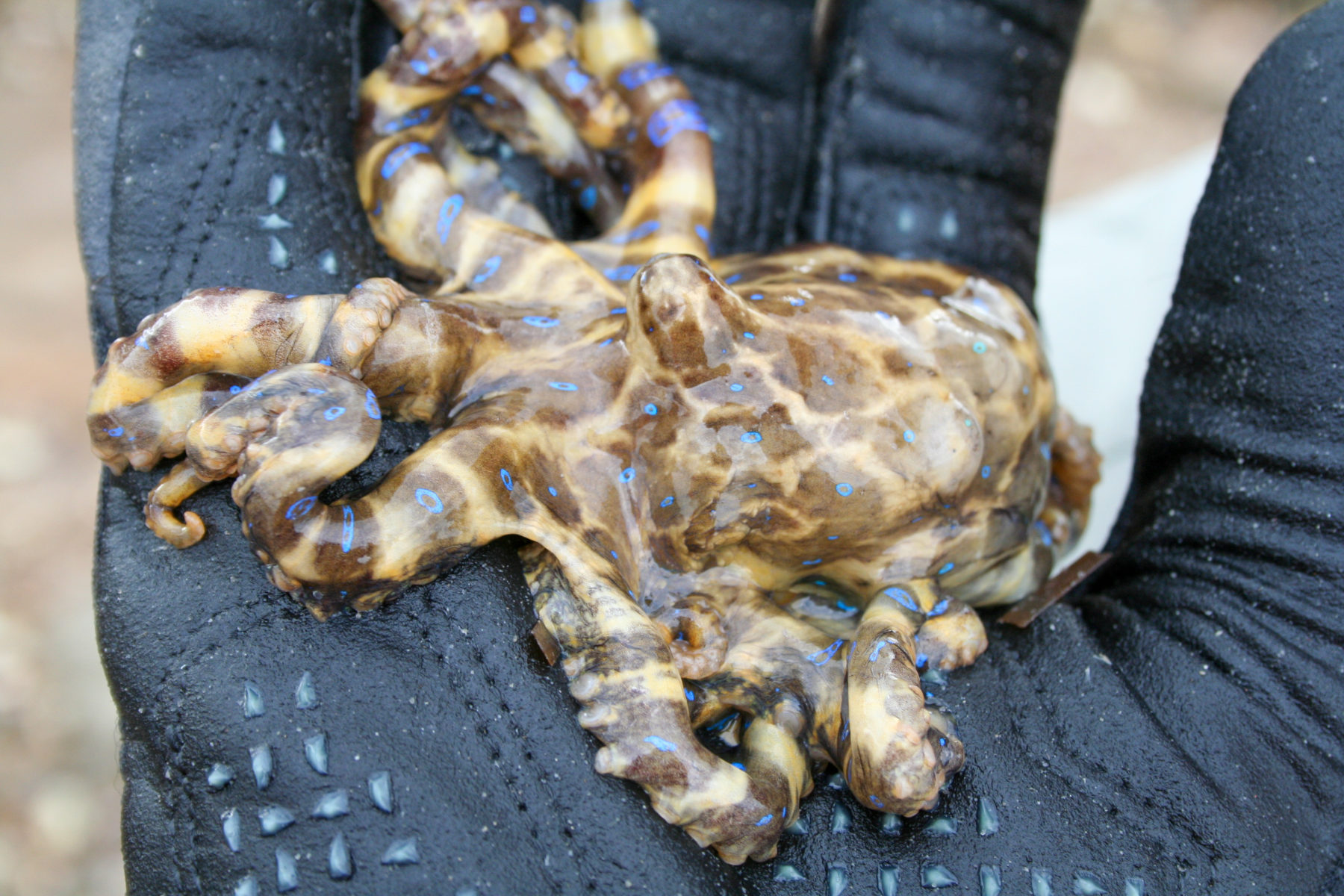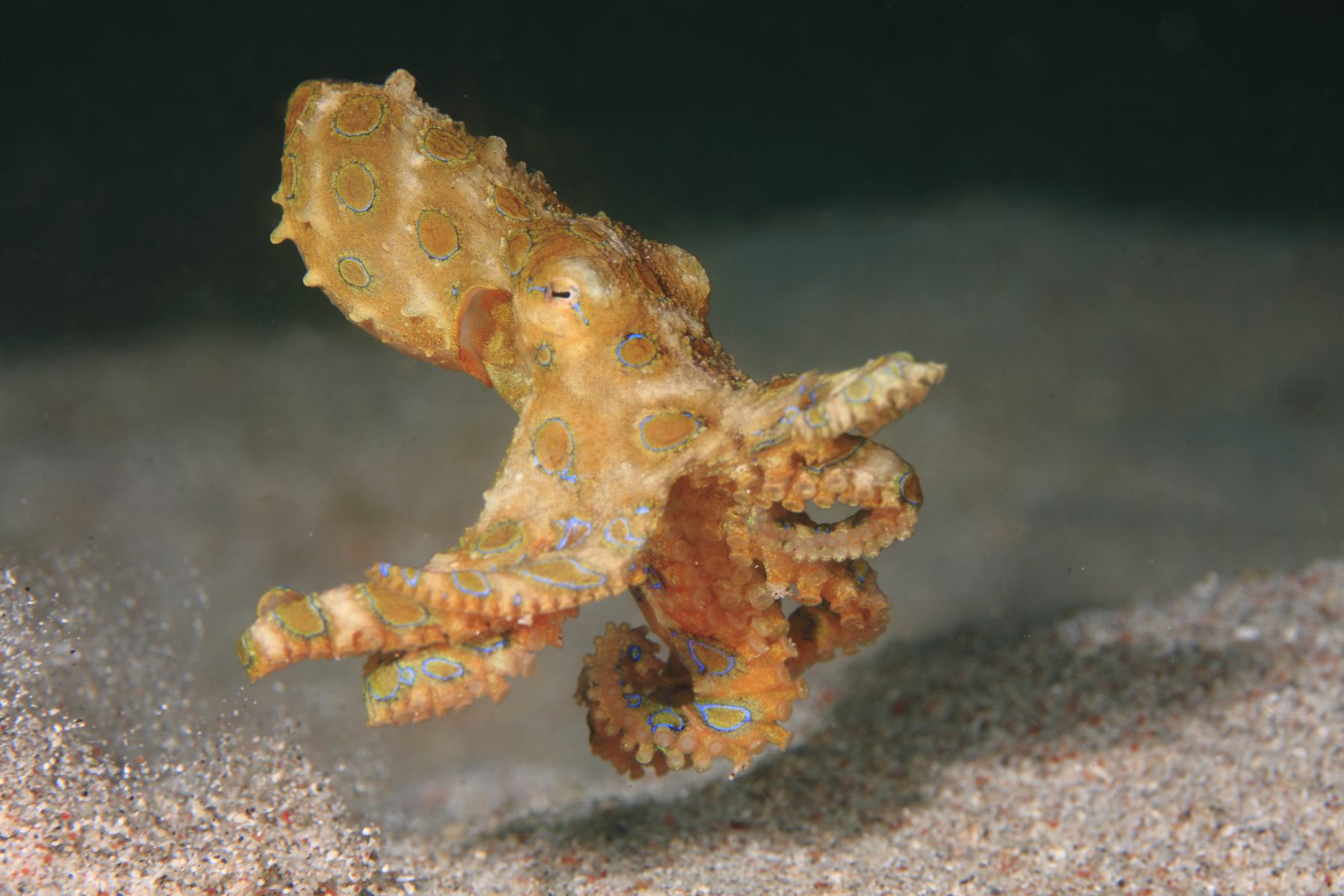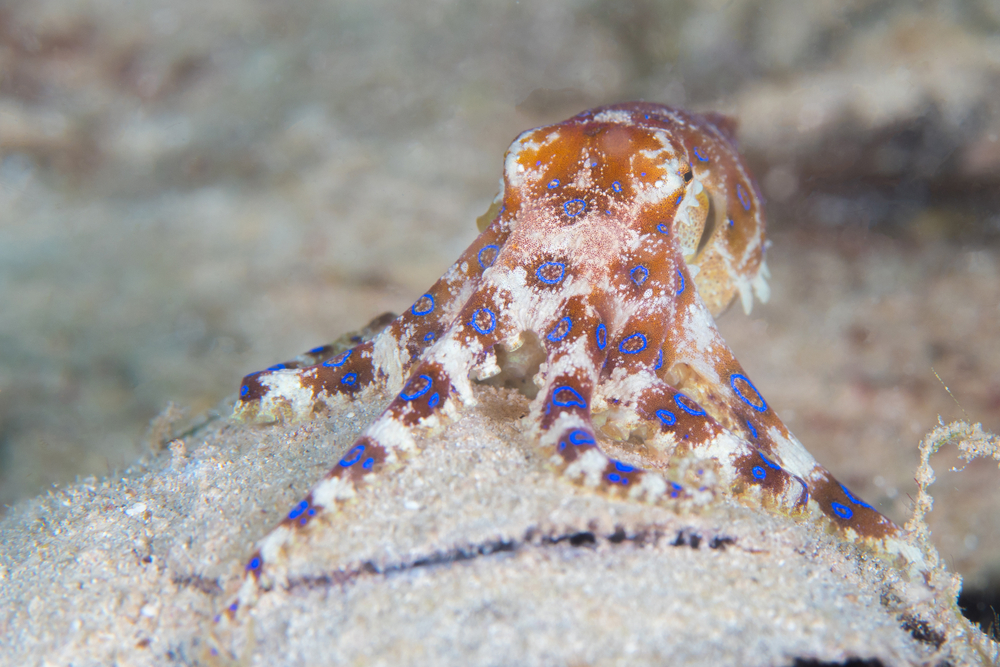| Common name | Blue-ringed octopus |
| Scientific name | Hapalochlaena maculosa |
| Type | Octopus |
| Diet | Carnivorous, eating insects and small mammals and reptiles |
| Average lifespan | Around two years |
| Size | Up to 12cm |
When it comes to dangerous threats within our ocean, a tiny, ring-patterned creature with eight floppy legs isn’t the first to spring to mind. But the reclusive yet highly-venomous blue-ringed octopus has enough poison inside it to kill 26 humans – and there isn’t a known anti-venom in sight.
With at least 10 different species of blue-ringed octopus in the world, the two best-known examples are the lesser (southern) blue-ringed octopus (Hapalochlaena maculosa) and the greater blue-ringed octopus (Hapalochlaena lunulata), both earning their name from the bright blue rings which appear like a pattern all over their body when they are alarmed. Quite simply, the lesser blue-ringed octopus has fewer rings, and the greater has more.

These tiny cephalopods are grey to beige or even yellow in colour when resting, and have large light brown patches, helping them to camouflage beautifully into their rocky surrounds. With their eight legs also marked with even brown patches, these marks become darker and iridescent blue rings start to pulsate within the maculae when the animal is agitated or distressed.
Found only in the temperate waters of southern Australia, the lesser (southern) blue-ringed octopus makes its home in reef flats and tidal pools, from southern Western Australia to eastern Victoria. The greater blue-ringed octopus can be found in tidal pools and shallow reefs from northern Australia to Japan, including Papua New Guinea, Solomon Islands, Philippines, Indonesia, and Sri Lanka.
Incredibly secretive and antisocial, the blue-ringed octopus hunts and feeds on hermit crabs, other small crabs, and shrimp during the day. The octopus has two distinct types of venom that are secreted from separate glands – one is used against its prey and one against its predators. The blue-ringed octopus is a master of ambush, using camouflage and a clever ability to hide within empty shells or rock crevices to wait until their prey is within sight, then they pounce on their hard-shelled meal, trapping it with their arms and using their hard parrot-like beak to make a hole in the shell or exoskeleton. Their tailored venom designed especially for prey is then dribbled into the opening, paralysing their meal so they can devour the softer tissue within reach. Meanwhile, the inside of the animal is partially digested by the salivary juices, which the octopus then sucks out, leaving a clean and empty shell behind.
Blue-ringed octopus live a relatively short life, with both the male and female reaching sexual maturity before the age of one. After mating, the female lays between 50 and 100 eggs, guarding them under her arm until they hatch, some 50 days later. Tragically, the female then dies as she is unable to eat during the time that she protects her eggs, with the male also dying just after mating occurs.

The odds of being stung by a blue-ringed octopus are luckily relatively low, mainly because the animal is rarely encountered in the first place. Doing their best to avoid confrontation at all costs, this octopus will flatten its body and skilfully blend into its surrounds to go unnoticed and when humans have been stung, its because they have either provoked or accidently stumbled across one of these tiny marine dwellers.
Capable of injecting a neuromuscular venom that paralyses and can be fatal, there is no antivenom, so artificial respiration is the only hope for those unfortunate enough to happen upon these beautiful yet poisonous creatures.








